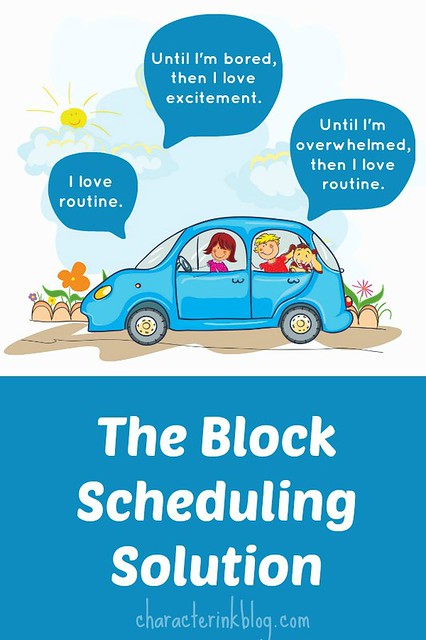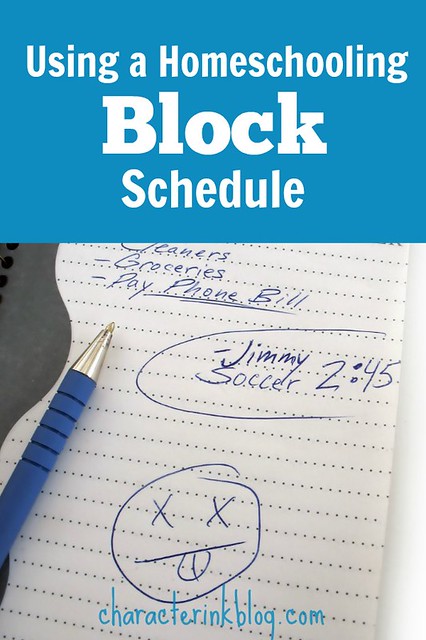When homeschooling moms hear the word “schedule,” they either cringe or celebrate. It seems that there is a division of camps when it comes to scheduling. While those who “celebrate” the schedule might be guilty of micro-managing their children and maybe even putting undue pressure on them, those who ‘cringe” when confronted with the idea of scheduling might suffer from a lack of productivity due to their disdain for schedules.
I have found that you do not have to have a love-hate relationship with schedules, but rather you have to figure out which type of homeschooler you are—one who loves schedules and wants to follow one to the letter or one who doesn’t care for them and would do better with a looser type of schedule that still provides some sense of structure.
If you love schedules, then you will probably do better with a moment-by-moment, or at least hour-by-hour one to guide your day.
If you are “allergic” to schedules, you might find a block type of schedule in which you do certain things in a certain order during certain time periods to suit your time management style. I used a combination of both—but always had the “block schedule” in mind for even our toddlers all the way through high school. I divided our day up into
Early morning
Morning
Noontime
Early afternoon
Late afternoon
Early evening
Dinner hour
Late evening
While I might not firmly make 10:00-10:30 math for everybody, I always knew (and the kids always knew) what to expect based on the block of time it was.
Regardless of what type of schedule you use, there are a few key things to being successful in homeschool scheduling. I will leave you with a few of these: (a) Change the schedule every few months as needed, based on the ages of your children; (b) Write the schedule out and “advertise” it for everybody in your family to see all the time; and (c) Attach things that are really important to you to things that are already in your schedule.
(a) Change the schedule as needed.
I found especially with little ones that I needed to change the schedule to adjust to their needs and my availability. When I had littles, I actually revised the schedule every season—based on how long the baby was nursing at that time; how long the toddler napped; who could do which chores now; who needed longer blocks of school meetings with me; etc. I wasn’t locked into the exact same schedule for the entire school year, but I changed it as the children changed throughout the year.
(b) Write the schedule and “advertise” it.
I posted our schedules on the refrigerator, in the fronts of the kids’ binders, on their lesson plan/check sheets, etc., so that everybody could always look and see what was supposed to be happening in our day at a certain time. The lunch person always knew what time he or she was supposed to be in the kitchen; the laundry person always knew what time laundry was to be done each day. By “publishing” the schedule for all to see, I made it more official—and I could even get Dad involved in helping me enforce it if I had a true, posted schedule.
(c) Attach important things to things that are already in your schedule.
We learned this trick (along with dozens of others) from Gregg Harris twenty-five years ago—and have used it every year since then. He said that if something is really important to you to do in your family, attach that activity to an existing one. For instance, if reading aloud to your children is something you really want in your schedule, attach it to breakfast, lunch, or bedtime—times that are already established in your home. We did this with many, many things—attaching things to existing things until our attachments had attachments attached to them—and our day was one big attachment! 🙂
Scheduling your homeschool doesn’t have to be drudgery with everybody following thirty minute time boxes and nobody enjoying it. Make your schedule work for you and your family!
OTHER SCHEDULING HELPS:





